Firewood Information
Firewood Rules
Campers and other visitors are reminded that it is prohibited to bring or possess on District properties any firewood that does not meets the State of Illinois and the USDA firewood certification and labeling requirements. This probibition is intended to help prevent the spread of the emerald ash borer (EAB). To find out more about EAB, visit the Illinois Department of Agriculture's website at www.IllinoisEAB.com.
The US Department of Agriculture also has a quarantine on interstate movement of firewood from the entire state of Illinois; so if you are an Illinois resident, you will not be able to take your firewood to another state without having it certified by the USDA. Regulated articles include ash nursery stock and green lumber; any other ash material including logs, stumps, roots, branches, as well as composted and uncomposted wood chips. Due to the difficulty in distinguishing between species of hardwood firewood, all hardwood firewood, including ash, oak, maple and hickory are regulated articles.
Transporting firewood is one way the emerald ash borer can be spread from areas with infested trees. Quarantines have been imposed by state and federal authorities to prevent infested ash firewood, logs or nursery trees from being transported and starting new infestations.
Rock Island County Forest Preserve Encourages On-Site Purchase of Firewood, Alternative Fuels, "Bring-It and Burn-It"
The Rock Island County Forest Preserve District offers firewood for purchase through local vendors at its campgrounds. Visitors may be asked to forfeit firewood by park staff if it has been brought to the park and it does not meet the state and federal certifications and labeling requirements. Consider using alternatives like charcoal and pre-fabricated logs that are available at retail outlets.
Prevention is the only way to contain the spread of the emerald ash borer because no treatments currently exist to cure infested trees. The insect can fly only short distances on its own, so limiting the movement of firewood and other potentially-infested wood products is the single most important step we can take to prevent the introduction of the pest to new areas and protect our ash trees.
What You Can Do To Help
Emerald ash borer is an exotic non-native insect that was first discovered in the U.S. near Detroit, Michigan in 2002, and thought to have been transported from Asia in wood packing material shipped to the U.S. Adult beetles cause some damage to ash trees by eating foliage. The most significant damage is the result of EAB larvae feeding on the inner bark of ash trees, eventually killing the affected trees.
Citizens can help in detecting EAB. The presence of the bug is difficult to detect in newly-infested trees. Watch for beetles of a metallic-green color about half the diameter of a penny on or near ash trees that are showing signs of disease or stress. Signs of the beetles in ash trees also include D-shaped holes in the bark of the trunk or branches and shoots growing from the base of the tree. For more information on EAB, check the web site at www.emeraldashborer.info.

